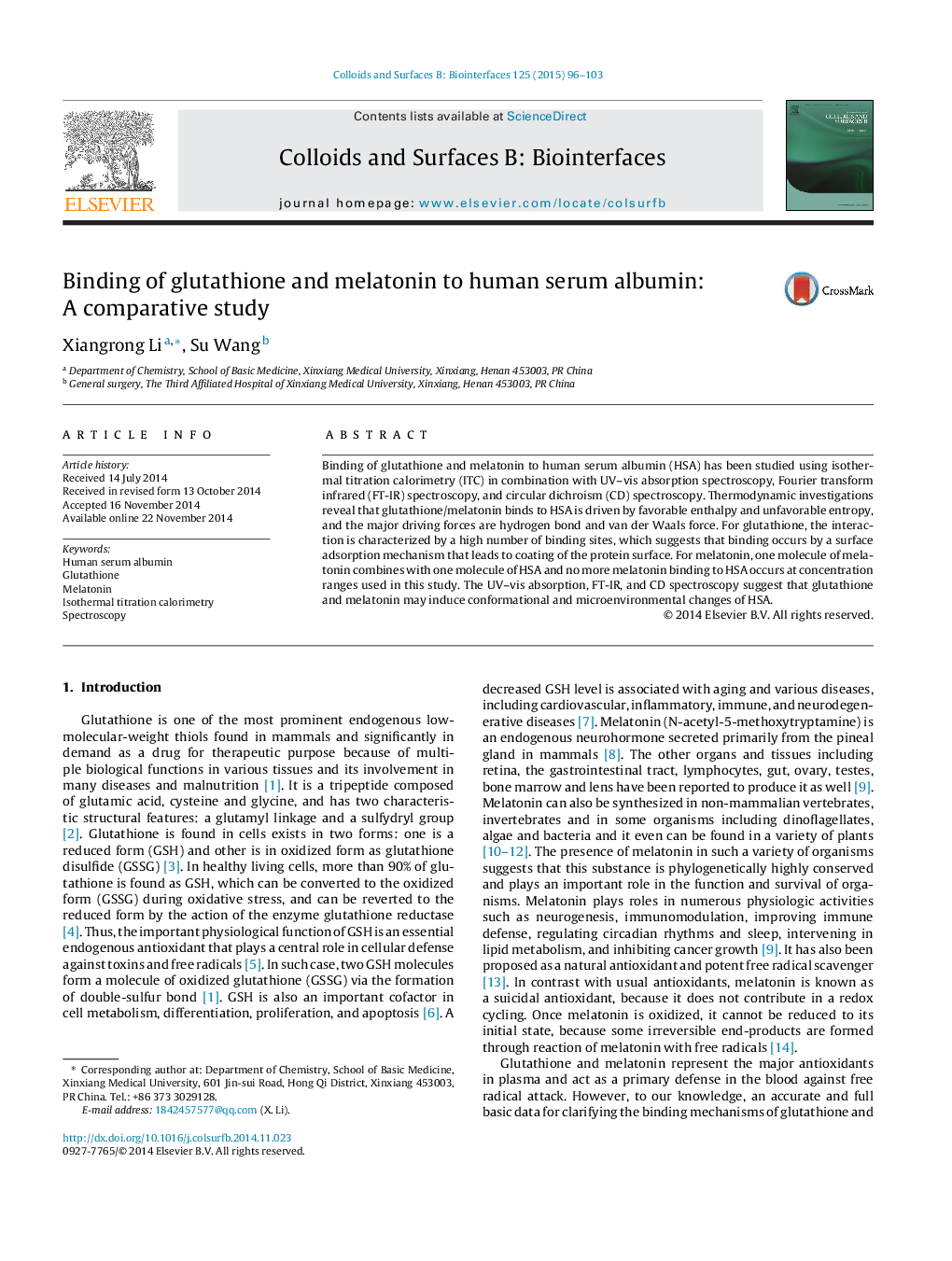| Article ID | Journal | Published Year | Pages | File Type |
|---|---|---|---|---|
| 599572 | Colloids and Surfaces B: Biointerfaces | 2015 | 8 Pages |
•Binding of glutathione to HSA occurs by a surface adsorption mechanism.•The interaction between melatonin and HSA forms a 1:1 melatonin–HSA complex.•Glutathione or melatonin binds to HSA is driven by favorable enthalpy and unfavorable entropy.•Hydrogen bond and van der Waals force play a major role in the reaction.•Glutathione and melatonin may induce conformational changes of HSA.
Binding of glutathione and melatonin to human serum albumin (HSA) has been studied using isothermal titration calorimetry (ITC) in combination with UV–vis absorption spectroscopy, Fourier transform infrared (FT-IR) spectroscopy, and circular dichroism (CD) spectroscopy. Thermodynamic investigations reveal that glutathione/melatonin binds to HSA is driven by favorable enthalpy and unfavorable entropy, and the major driving forces are hydrogen bond and van der Waals force. For glutathione, the interaction is characterized by a high number of binding sites, which suggests that binding occurs by a surface adsorption mechanism that leads to coating of the protein surface. For melatonin, one molecule of melatonin combines with one molecule of HSA and no more melatonin binding to HSA occurs at concentration ranges used in this study. The UV–vis absorption, FT-IR, and CD spectroscopy suggest that glutathione and melatonin may induce conformational and microenvironmental changes of HSA.
Graphical abstractFigure optionsDownload full-size imageDownload as PowerPoint slide
